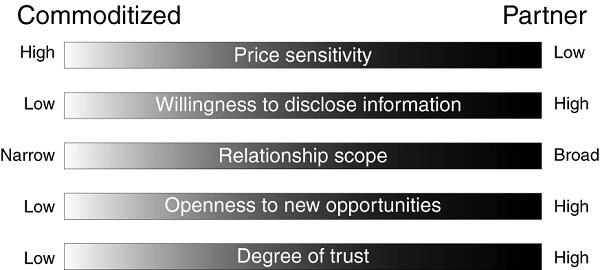In the age of AI, relationship scope will drive value in professional services
I recently spoke to a group of senior partners responsible for a major law firm’s relationships with its top 50 clients.
The session was primarily framed around helping the partners understand the degree and nature of the shifts impacting their major clients in industries such as financial services, mining, construction, and infrastructure.
However I also delved into the impact of new technologies including AI on the delivery of high-end professional services, a topic I have been doing substantial work on recently with several clients.
The impact of AI on professional services
There are many specific issues stemming from the rise of AI and automation in professional services delivery, including the modularization of what have often been aggregated services, increased choice on service providers, changes in pricing models, and shifts in the relative roles of junior and senior professionals.
However arguably the biggest single impact is on the scope of the firm-client relationship.
The core of this was described in detail in the first edition of my book Developing Knowledge-Based Client Relationships: The Future of Professional Services, published in 2000, which described the relationship impact of new technologies in ways that are completely relevant today.
The spectrum of relationship styles
There is a spectrum of relationship styles, as shown in the figure below taken from the book.

Over the last decade and more many corporations have been actively pushing their professional services providers towards commoditization, for example through the use of panels and bringing in the procurement function to administer their relationships.
However many firms have in any case implicitly acted as commoditized providers, attempting to respond competitively to requests for services rather than helping clients frame the strategic intent that precedes looking for professional services.
All of the variables that shift between commoditized and partner relationships described in the diagram are important. However arguably the most important one is relationship scope.
Relationship scope in an AI world
The tools and approaches of machine learning and related technologies are proving to be incredible powerful. However for the meantime their application is always within a highly defined domain.
This allows specific service domains to be shifted to other service providers, brought in-house, or repriced. Each time this erodes the scope of the client relationship.
There are increasingly distinct strategic positions possible around service, industry and outcome specialization or generalization.
Broadening strategic scope
The greatest value will accrue to those firms that move to a broader relationship scope, not so much in numbers of different services being provided, but in the strategic scope.
More than ever in an age of AI, professionals need to be working alongside their clients in framing their strategic needs, responding to shifts in the business environment, and acting as a true partner.


